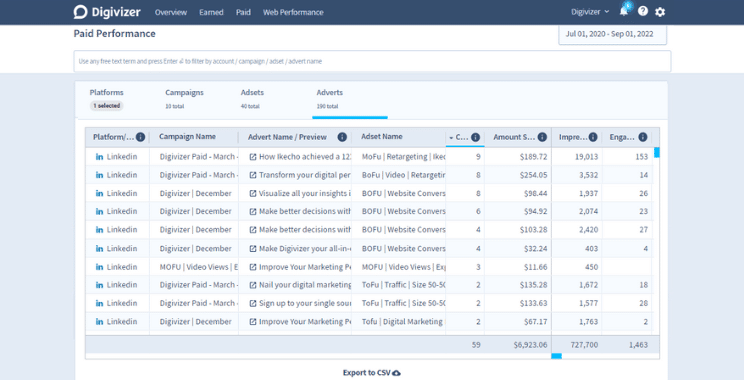That stakeholders are a forgotten audience within marketing programs may be more common than it should be.
I say this because in many cases, stakeholders are kept away from the unvarnished, objective, data-led, single source of marketing truth by those who control the data, who have something to hide, or have something to protect (usually their jobs).
In other words, vested interests are killing marketing programs.
Our experience is that many stakeholders, particularly C-level stakeholders, are frustrated at the lack of information made available to them by the marketing teams, the delay in receiving that information, and the biases in the information.
And this is a business problem, not just a marketing problem. Stakeholders include, sales and business development teams, joint-marketing and co-branding partners, agencies and other external partners, in addition to the C-suite. All have reporting and ultimate budget responsibilities. Taken together with those responsible for delivering the programs, everyone who should influence how marketing is delivered, and therefore be held accountable for results, needs real-time access to single sources of truth about marketing program performance
Too often, we hear senior management and business owners say the opposite is the reality.
As one business leader recently told me, “we realized too late that we spent a whole bunch of money on something that did not work, and we would not have continued had we known this earlier. We would have redirected the budget. And we’re not happy we’ve only just discovered this months after the campaign finished.” Waiting to find your budget did not work as hard as it could is an opportunity cost greater than the dollars wasted.
Better insights, better teams, better performance
There are other benefits in ensuring all stakeholders have real-time visibility. Transparency around real-time performance builds empowerment, upskills resources, and moves in all directions.
Once a single source of truth about the performance of marketing programs is made available to everyone, without constraint or delay, marketing programs can flourish.
The collective learning muscle of the organization increases.
Marketing programs that already perform well can perform even better.
Marketing programs that don’t perform well can be kick-started, redirected or discarded.
Greater trust can be built in agency and client relationships. There are no surprises, no place to hide, just the truth about whether the current marketing program is working as expected or not. Either way, resources can be deployed to best effect.
Confidence is built with stakeholders who will be more likely to invest in success when they can see success.
Decision quality improves as it can be based on real-time data and insights.
CMOs can prove the value of their strategies and demonstrate the quality of their decisions.
Marketers and agencies can demonstrate the worth of their creativity and demonstrate how well creativity actually works for their customers. Rather than working in silos, they have visibility into the insights from all aspects of the marketing program and customer touch points. These include organic search and social media, to best-performing creative, to what is actually driving valuable conversions on websites and from which platforms. These insights in turn drive better content outcomes.
Customers will relate to brands that clearly understand them.
And everyone wins.
What’s wrong with marketing accountability
When Digivizer is invited to work with organizations, it’s often to address some of these concerns. Common factors include lack of insights, confusion, delays in information, competing silos, and an absence of truth into what’s working.
Different teams try to justify their own reporting mechanisms or processes, often to justify the decisions they have made in external agencies or program development. We still see too many examples of teams seeking to show themselves in the best-possible light, or to rely on the agency they have appointed to do this for them.
That results in fragmented reporting. For every team with its own reporting process, targets, benchmarks and KPIs, there is another version of the truth. Nothing becomes clear, and the only thing that grows is the noise of competing claims.
As I said in a recent article, what’s interesting is that the C-suite is demanding more clarity.
Recently, we’ve added two organizations that have rejected too many systems, too many competing teams and too many unchallenged claims about performance. They have turned to a single source of truth about marketing performance.
We help with implementing this change, but what’s impressive is that their approach binds their extended ecosystems – their marketing team, management team and multiple agencies – into one reporting framework. This includes providing visibility and access to their finance teams. They use the awareness of real-time expenditure and conversions to estimate future revenues and book value.
It’s worth emphasizing that this makes everyone in the ecosystem accountable as well.
Ending marketing disunity
By removing a previous reliance on individuals to provide the insights, these two organizations – and their internal teams – now focus on consolidated data presented in a single, composite view.
They no longer need to pay for valuable engineering resources or wait for analysts to provide the information. Instead they can invest in resources that add real value: developing strategies, setting direction and making decisions that actually deliver returns.
The potential for team disunity and agency rivalry has been removed completely.
Everyone on these programs is empowered to seek the best possible return for the investment they are responsible for. These teams now research the opportunities that already exist, to provide inputs into strategies and to see how things are actually performing.
Making the data and the insights available (it can be found) and accessible (it can be understood) in real-time allows everyone to dig deeper into the meaning that they can see in front of them. That can be returns on a paid budget, the impact of creative executions, determining what content should be invested in or campaigns to be developed, or any other potential success factor.
New conversations, focused on performance
The discussion about performance continues to move towards what works best. This will be based on understanding why that’s the case, testing assumptions about what to do next, and focusing where success is either most-likely, based on past data, or simply demonstrated by results.
It is much easier to focus on a single area of potential performance lift within a digital funnel, than to try and move everything at once. Having visibility into everything, broken down into each platform, each stage of the funnel and each piece of creative, copy or destination, helps guide investment.
Ultimately, this comes down to business leaders deciding for themselves what they want to do about stopping the different vested interests in their organization getting in the way of better results.
They can replace the bullshit that results from different teams presenting different reports in different time frames, with one single source of marketing truth, that everyone has access to, whether they are a specialist or a beginner.
They can close the gap between agency and brand.
And they can close the gap between failure and success.
Because the more powerful the spotlight being shone on the performance of marketing programs, the more accountable the extended business development and customer experience teams become, and the better the marketing results will be.
A version of this article also appears at digivizer.com.












